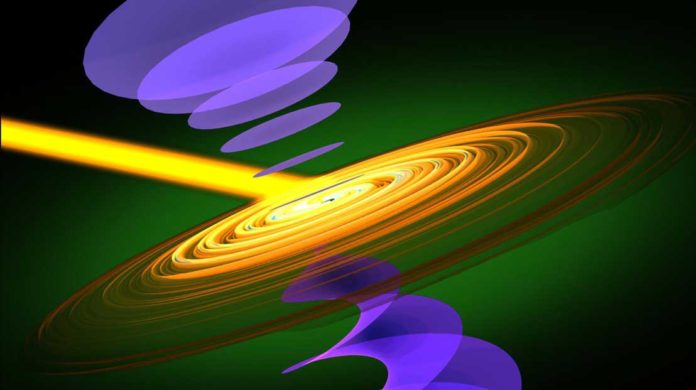Vortex-carrying matter waves, such as chiral electron beams, are of significant interest in both applied and fundamental science. Continuous wave electron vortex beams are commonly prepared via passive phase masks imprinting a transverse phase modulation on the electron’s wave function.
These beams are very interesting because they imply that the particle has a well-defined orbital angular momentum, which describes the rotation of a particle around a fixed point. Means, vortex beams can offer new ways of interacting with matter, e.g. enhanced sensitivity to magnetic fields in sensors, or generate new absorption channels for the interaction between radiation and tissue in medical treatments (e.g. radiotherapy).
On the other hand, they also allow new channels in basic interactions among elementary particles, promising new insights into the inner structure of particles such as neutrons, protons or ions.
The most fascinating thing about the matter is, it has wave nature along with its particle nature. It means, it is possible using a device called passive phase mask, to create massive particles form vortex beams by simply modulating their wave function.
When waves at sea crash into it, their “wave-ness” triggers and form whirlpools. So far, physicists have been using the passive phase mask method to make vortex beams of electrons and neutrons.
Challenging this idea scientists at the EPFL have demonstrated that it is possible to use light to dynamically twist an individual electron’s wave function. They thus have successfully generated an ultrashort vortex electron beam and actively switching its vorticity on the attosecond (10-18 seconds) timescale.
For this, scientists exploited one of the fundamental rules governing the interaction of particles on the nanoscale level: energy and momentum conservation. It suggests: the sum of the energies, masses, and velocities of two particles before and after their collision must be the same. Such a constraint is responsible for an electron to gain orbital angular momentum during its interaction with an ad hoc prepared light field, i.e. a chiral plasmon.
During experiments, scientists fired circularly polarized, ultrashort laser pulses through a nano-hole fabricated onto a metallic film. Doing this causes a strong, localized electromagnetic field (the chiral plasmon), and individual electrons were made to interact with it.
Then, by using an ultrafast transmission electron microscope, scientists monitored the resulting phase profiles of the electrons. They found that during the interaction of the electrons with the field, the wave function of the electrons took on a “chiral modulation”; a right- or left-handed movement whose “handiness” can be actively controlled by adjusting the polarization of the laser pulses.
Fabrizio Carbone at EPFL said, “There are many practical applications from these experiments. Ultrafast vortex electron beams can be used to encode and manipulate quantum information; the electrons’ orbital angular momentum can be transferred to the spins of magnetic materials to control the topological charge in new devices for data storage.”
“But even more intriguingly, using light to dynamically ‘twist’ matter waves offers a new perspective in shaping protons or ion beams such as those used in medical therapy, possibly enabling new radiation-matter interaction mechanisms that can be very useful for selective tissue ablation techniques.”
The study is published in the journal Nature Materials.
